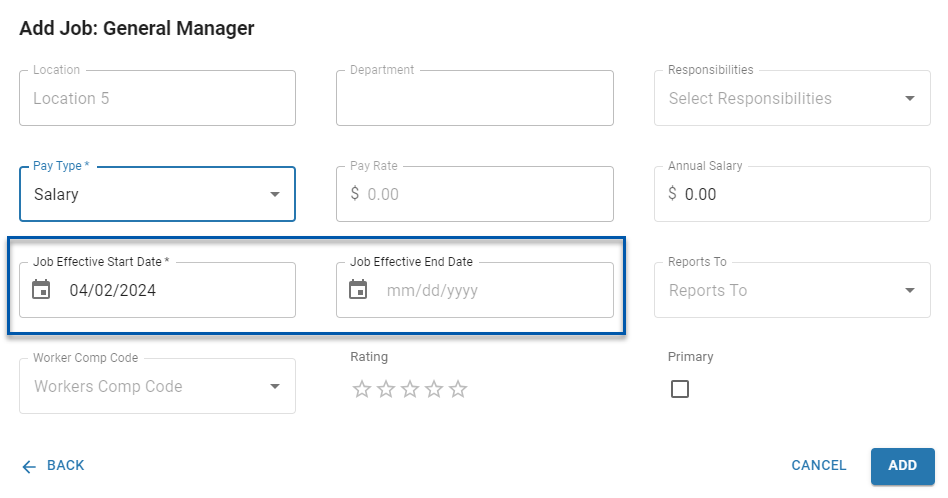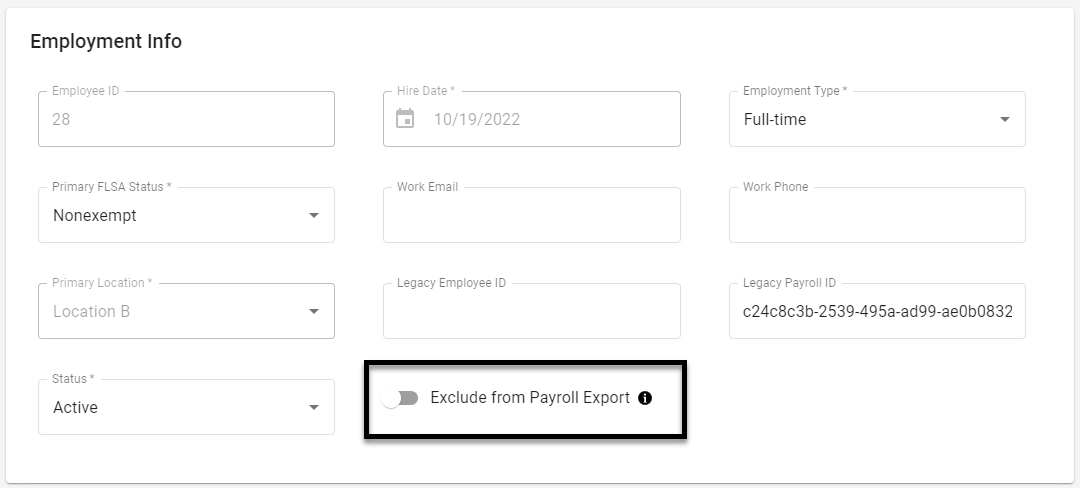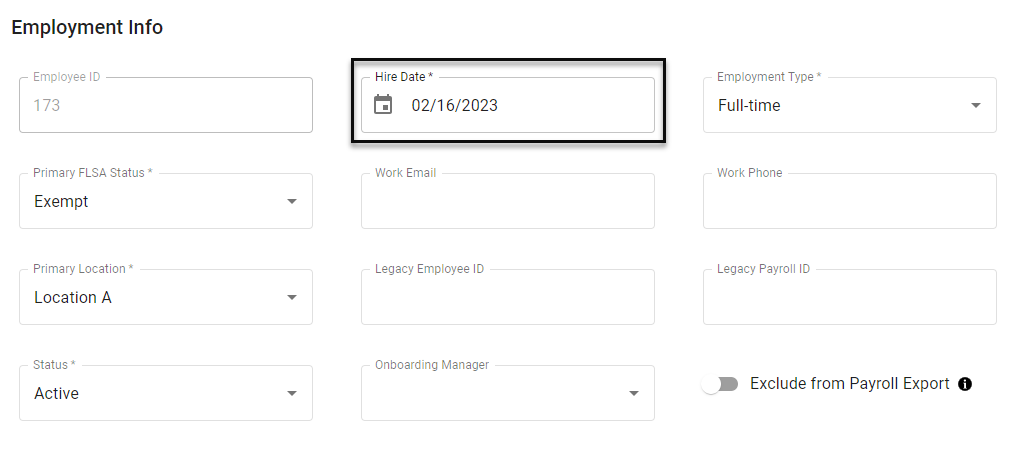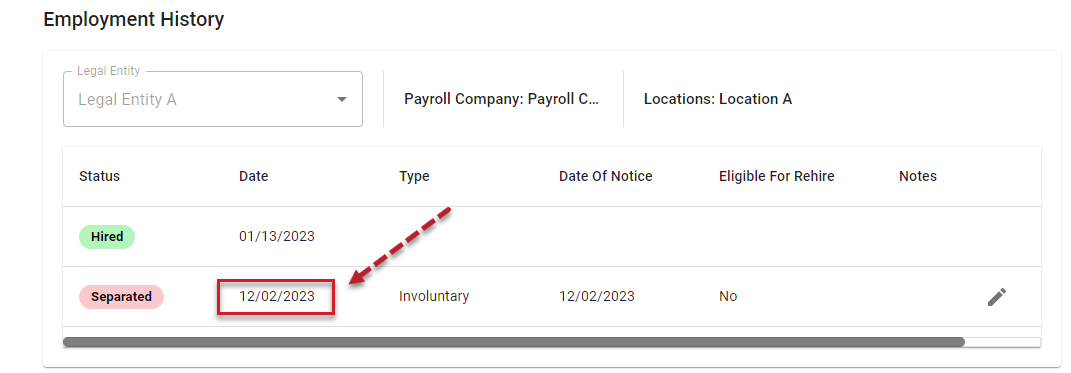This article reviews the payroll process for salaried employees within Workforce.
Salary Jobs
Within Workforce, any employee who has a job with the pay type of 'Salary' will have wages associated with that job automatically included in pay runs.
'Salary' jobs are added on the 'Employment' tab of Employee Records. Each Employee Record can only have one active job with the pay type of 'Salary' per location. The 'Effective Start Date' and 'Effective End Date' fields are used to manage which salary job is active. Learn more about Salary Effective Start and End Dates here.

The amount added per pay run is equal to the job's 'Annual Salary' divided by the number of pay cycles in the year. The pay cycle configuration can be viewed on the Workforce Settings page.

If the Employee Record has additional 'Hourly' jobs, the wages for these jobs will be added to pay runs when hourly earnings are imported.
Salary Job Permissions
The following permissions are associated with salary jobs:
Labor → Employees → Employment →
Salary Job Info
View Salary Job Info
Edit Salary Job Info
Salary Pay Rates
View Salary Pay Rates
Edit Salary Pay Rates
Excluding Salaried Employees from the Earnings Export
If a salaried employee must punch into the POS in order to access POS functions but their punches are not used for payroll purposes, they should be excluded from the Earnings Export. This will prevent earnings associated with their POS punches from being imported, which would result in overpayment.
The 'Exclude from Payroll Export' setting is found on the Employment tab of Employee Records.

Hire Dates and Termination Dates
When a salaried employee's payment information is added to pay runs, that employee's hire date and separation date are used to determine if they should be paid for all days in the pay cycle. Salaried employees will be paid a 'daily rate' for the days within the pay cycle that are after their hire date and before their separation date.
The hire date is found in the 'Employment Info' section on the 'Employment' tab of Employee Records.

The separation date is found in the 'Employment History' section on the 'Employment' tab of Employee Records.

Expected Weekly Hours, Calculated Hourly Pay Rate, and PTO
For employees with salary jobs, their 'expected weekly hours' amount is used to calculate an hourly pay rate, which is used for reporting and PTO purposes. The hourly pay rate is calculated as:
Annual Salary / 52 Weeks in the Year / Expected Weekly Hours
When an employee with a salary job uses their PTO, their earning details will show total hours equal to the expected weekly hours, with earnings split between salary earnings and PTO earnings. The following earning types are considered PTO earnings:
Vacation
Sick
Holiday
Bereavement
Unpaid
PTO
Example: |